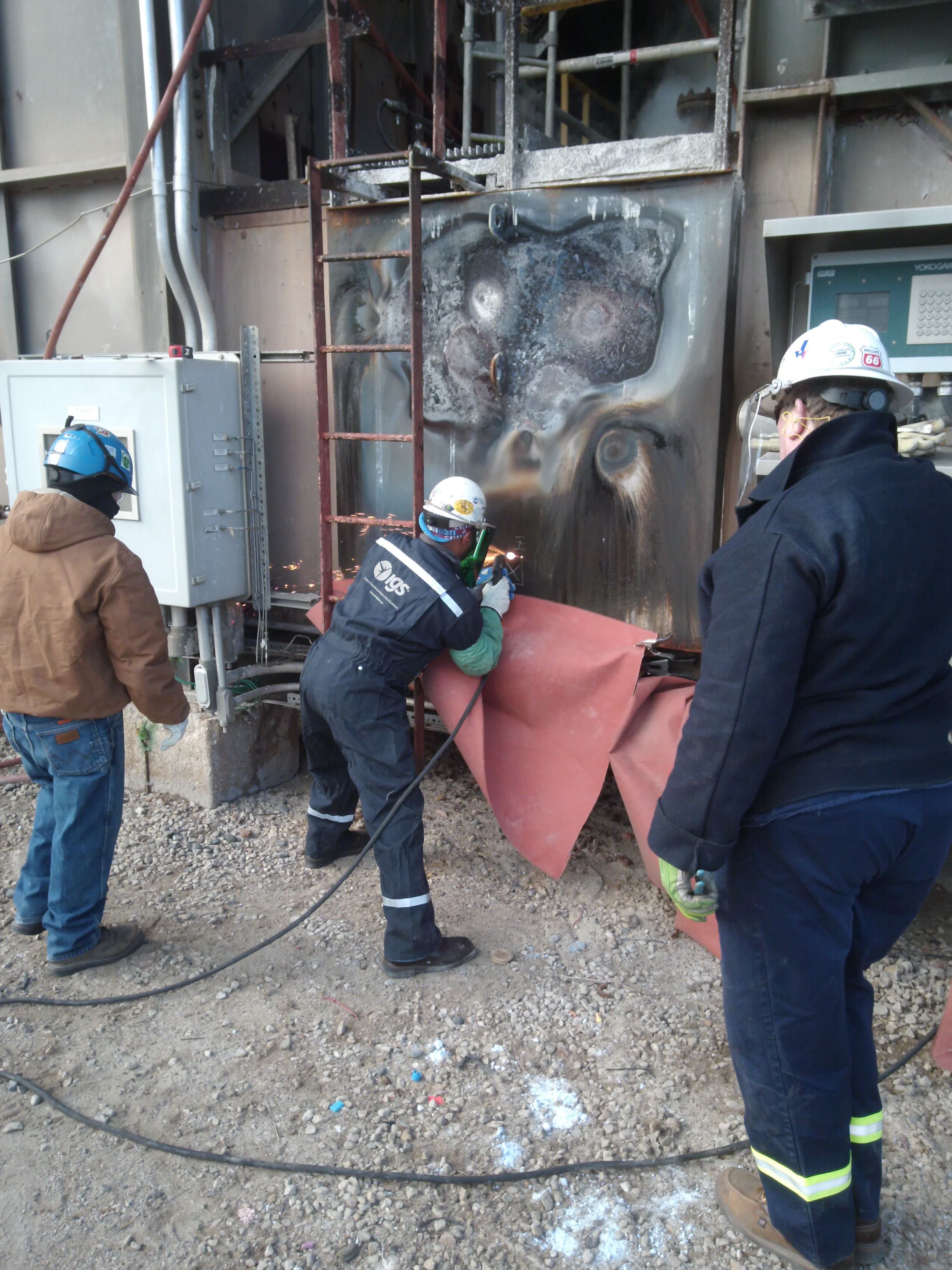Introduction
Refractory linings are insulating and minimize heat loss, making them essential to retaining the high-temperature environment. However, when subjected to high temperatures, refractory can deteriorate and potentially lead to failure if remedial work is not carried out.
If refractory failure results in an unplanned shutdown, it can cost plants more than $1m/day in lost production.
This article will discuss the most common causes of refractory failure, and the method of repairing refractory online without the need to disrupt normal operation.
3Common Causes of Refractory Failure
As refractory linings age, their physical properties change. The high-temperature environment causes microstructural changes to the binders within the materials, leading to a loss of surface or internal strength. If the refractory material carries a compressive load, such as bricks, or castable linings, this can lead to local, or widespread failure.
If the refractory is subject to flame impingement, which is common in many radiant wall applications, the useful life will be shorter.
In oil-fired heaters, refractory deterioration is accelerated by corrosive agents in the combustion products. Fortunately, there are few cases where oil-firing is used now.
A combination of refractory materials is a common feature in fired heaters. Openings such as doors often use fiber and brick material, and peep sights may use IFB, castable, or fibermodules.
A standardized design using different materials can be challenging as each material has varying properties at high temperatures. Therefore, refractory linings can become damaged, leaving the shell exposed to hot flue gases and causing hot spots.
To lower the risk of mismatched refractory materials, it is a good idea to work closely with the refractory supplier to ensure comparable materials are used around openings.
There are several factors that can cause mechanical stress to lead to refractory failure. This includes:
Vibration or interference from other equipment can cause refractory to become displaced and break down over time.
This occurs when refractory linings expand and contract at different rates due to thermal conditions. This often leads to cracking and spalling which can cause failure if not repaired.
Mechanical impact from falling objects or components can also damage refractory.
Methods to Repair Refractory
Once the damage has been identified, there are several options. Production can be interrupted to take the asset offline and carry out conventional repairs, or the furnace can continue to run at reduced performance until the next planned turnaround.
Alternatively, an online refractory repair service is offered byHot-tek™, where there is no need to bring the heater off-line and production will not be interrupted or capacity limited.This is a good option to temporarily fix damage until the next planned turnaround.
A team of refractory technicians can be mobilized at short notice and the repair involves creating minimal access point openings to insert specially designed components and repair material, delivering a semi-permanent repair lasting at least until the next turnaround.
Conclusion
There are many more causes of refractory failure such as loss of support and poor installation or maintenance, but shutting down the furnace should always be a last resort as this has a huge impact on production and revenue. The operating environment is responsible for most refractory failures and a common oversight is to increase the furnace temperature without assessing the impact that this will have on the design parameters of the refractory. Planning for over-capacity can help to mitigate the risk of refractory failure if specifications change after installation.
If unexpected performance losses are impacting your operations, Integrated Global Services (IGS) can mobilize quickly to help you identify, fix, and prevent future damage.
This article can also be found in the issue below.





